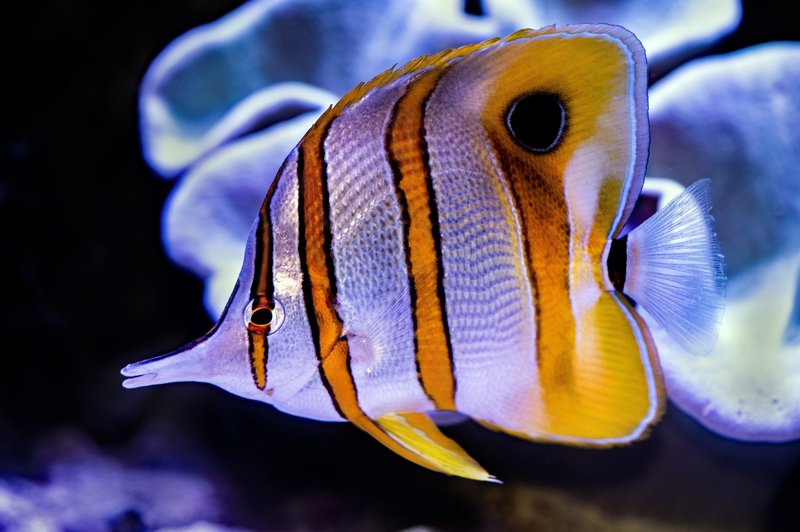
Now, if you’re a beginner trying to understand how these fish interact with their environment and each other, you might be wondering why they behave the way they do. Let’s dive into the world of butterflyfish and explore their behavior and temperament, shedding light on what makes them tick.
What Are Butterflyfish?
Butterflyfish belong to the family Chaetodontidae and are a popular sight in tropical and subtropical oceans. With around 129 species known, these fish display a dazzling array of colors and patterns. You can think of them as the butterflies of the sea, gliding gracefully through coral reefs. Their distinctive shapes and vibrant hues not only serve as camouflage but also play a role in their social interactions.
They typically measure between 4 to 9 inches long, making them small but striking inhabitants of marine ecosystems. Each species has its own unique pattern and color combination, ranging from bright yellows to deep blues. This diversity is vital for their survival, helping them blend in with the corals or catch the eye of a mate.
Social Structure and Interaction
Butterflyfish are inherently social creatures. Most species can be found swimming in pairs, and they often share their habitat with other fish. Their social behavior can be likened to a friendship group where each member has its role and place. They communicate primarily through body language and various swimming patterns, which can tell a lot about their mood.
Here’s the thing: when you see two butterflyfish swimming side by side, it’s usually a mated pair. They are known to be monogamous, forming bonds that can last for life. When a pair is separated, they exhibit signs of stress. If you’re ever lucky enough to observe them, you might catch a glimpse of their courtship dances, which are both mesmerizing and critical for mating.
Territorial Behavior
Even though butterflyfish are social, they can also display territorial behavior, especially during the breeding season. Each fish has its own space on the reef, and they will defend it against intruders. You might notice them being a bit aggressive if a newcomer wanders too close to their area. Think of it like a homeowner protecting their yard—only their yard is a colorful reef!
Their aggressive displays usually consist of intense swimming patterns and sometimes even nudging or chasing away other fish. It’s important to understand this behavior if you’re considering housing them in a tank. Their territorial nature means that you’ll need to create enough space to prevent conflicts.
Feeding Habits and Foraging Behavior
Butterflyfish are mostly herbivores, feeding primarily on coral polyps and algae. Their long, pointed snouts are perfect for picking food from crevices in the coral. Imagine trying to reach a piece of candy stuck in a tight spot—that’s how they navigate their feeding grounds.
Different species have unique preferences when it comes to food. Some might enjoy munching on a specific type of coral, while others are more generalist eaters. This diversity in diet is essential for the health of coral reefs, as it helps maintain a balanced ecosystem.
Here’s an interesting fact: some butterflyfish have been observed using their fins to knock or scrape coral to get at their favorite meals. This behavior shows not only their resourcefulness but also their intelligence in foraging.
Temperament and Compatibility in Aquariums
If you’re looking to keep butterflyfish in a home aquarium, understanding their temperament is crucial. Generally speaking, they are best kept with other peaceful species, as their territorial nature can lead to conflict if housed with more aggressive fish. In a tank, they can show signs of stress when overcrowded or when compatible species are not present.
When introducing new fish to an established tank, it’s wise to do so gradually. This can help prevent aggressive behavior, allowing everyone to adjust without undue stress. Remember, stress can lead to health issues in fish, so keeping a calm and harmonious environment is key.
Here’s a tip: creating plenty of hiding spots and visual barriers using rocks and plants can help minimize aggression. These structures give butterflyfish places to retreat if they feel threatened.
Behavioral Adaptations for Survival
Butterflyfish have developed various behavioral adaptations that help them survive in the wild. Their vibrant colors may seem like a liability, but they actually serve multiple purposes. For instance, their patterns can confuse predators, making it harder for them to focus on one fish. This is similar to how some animals blend into their surroundings to avoid danger.
Additionally, they often have a habit of hovering or darting away quickly when they sense a threat. This quick response can make the difference between being caught and escaping. Understanding these behaviors can give you insight into how these fish thrive in their natural environments.
Stress Responses
Stress can significantly impact butterflyfish behavior. When stressed, you might notice them hiding more often or exhibiting erratic swimming patterns. They may also stop eating, which can be a serious health concern. It’s essential to monitor your fish regularly and keep an eye out for signs of distress, such as color fading or lethargy.
If you do notice stress signals, it’s vital to assess the tank conditions. Check the water quality, temperature, and the presence of compatible tank mates. Fixing these issues can often help your butterflyfish return to their lively selves.
Butterflyfish are truly captivating creatures. Their vibrant colors, social interactions, and unique behaviors contribute to the charm that makes them favorites among ocean lovers and aquarium enthusiasts alike. Understanding their behavior and temperament can enhance your appreciation of these fish, whether you’re observing them in the wild or as part of a home aquarium.
By taking the time to learn about their lives, you can better appreciate the role they play in the ecosystem and create a welcoming environment if you choose to keep them as pets. So the next time you spot a butterflyfish, take a moment to admire not just their beauty, but also the fascinating behaviors that make them the butterflies of the sea.

